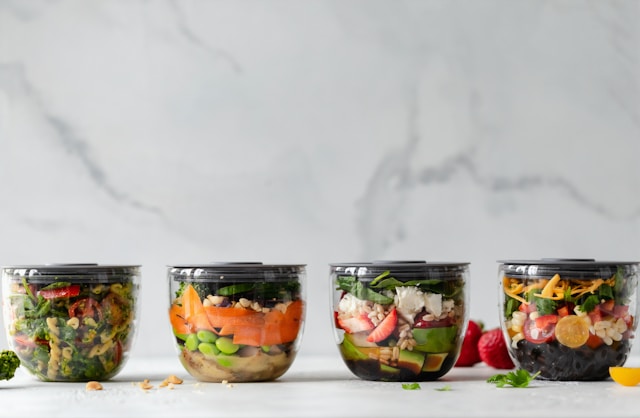Your cart is currently empty!

Meal Planning 101: Easy Prep Tips for Busy Families This Fall
Fall brings cozy vibes, changing leaves, and… a whole lot of chaos. Between school drop-offs, after-school activities, and work, figuring out what’s for dinner can feel like just one more thing on an already full plate. But it doesn’t have to be that way. A simple meal plan, just a few meals ahead of time, can make a huge difference in how your week flows. It saves time, money, and that daily “what are we even eating tonight?” panic.
In this post, we’re sharing realistic, low-stress meal planning tips to help your family. Meal Planning 101: Easy Prep Tips for Busy Families This Fall. Stay fed, happy, and a little more organized this fall.
Why Meal Planning Matters for Busy Families
When life gets busy, meals are often the first thing to fall apart. One skipped grocery run turns into three nights of takeout, and suddenly everyone’s tired, cranky, and eating cereal at 9 p.m. (We’ve all been there.)
Meal planning isn’t about having a perfect Pinterest-worthy menu. It’s about creating structure that actually supports your life.
Here’s what meal planning can do for your family:
- Save time: No more last-minute scrambling or multiple grocery store trips during the week.
- Spend less: A plan helps cut back on impulse buys, food waste, and drive-thru dinners.
- Reduce decision fatigue: You don’t have to figure out dinner every night from scratch. It’s already decided.
- Support better nutrition: You’re more likely to eat balanced meals (and have healthier snacks ready) when you plan ahead. Even if “healthy” just means adding a veggie to the plate.
Meal planning isn’t about perfection. It’s about making busy days just a little easier.
Step 1: Keep It Simple: Start with 3–5 Core Meals
You don’t need to plan breakfast, lunch, and dinner for seven full days to feel organized. In fact, trying to plan too much usually backfires.
Instead, start small. Choose 3 to 5 go-to meals your family likes and rotate them through the week. These should be meals that:
- Come together quickly
- Use ingredients you usually have
- Make enough for leftovers (or can be repurposed into something else)
For example:
- Monday: Baked chicken + roasted veggies
- Tuesday: Tacos (use leftover chicken)
- Wednesday: Pasta night
- Thursday: Breakfast-for-dinner
- Friday: Leftovers or freezer meal
You can always build variety later. But having just a few solid meals in your rotation takes the guesswork out of your week, and helps you grocery shop with more intention.

Step 2: Create a Flexible Meal Planning Template
A good meal plan isn’t rigid. It works with your schedule, not against it. Instead of assigning a specific meal to every night, create a loose structure you can adjust throughout the week.
Here are a few simple ways to build in flexibility:
Try “theme nights” to reduce decision fatigue:
- Meatless Monday
- Taco Tuesday
- Slow Cooker Wednesday
- Leftovers Thursday
- Fun Friday (Pizza, breakfast-for-dinner, etc.)
Use a visual planner
Whether it’s a dry-erase board on the fridge, a printable weekly planner, or a shared Google Doc, seeing your plan at a glance helps everyone stay on the same page.
Don’t forget margin
Leave space for leftovers, takeout, or “whatever nights” where plans change or energy runs out. (Because real life happens.)
A flexible plan gives you structure and breathing room. Which is exactly what busy fall schedules need.
Step 3: Grocery Shop with a Purpose
One of the biggest benefits of meal planning? It turns grocery shopping from a stressful chore into a targeted, time-saving mission.
Here’s how to make it work:
Build your grocery list after planning your meals
Start by writing down the ingredients you’ll need for your 3–5 core meals, plus any staple snacks, sides, or breakfast items. This helps you avoid impulse buys and ensures you only buy what you’ll actually use.
Organize your list by category
Group items together by section (produce, dairy, pantry, freezer) so your trip flows faster, and you’re less likely to forget something.
Shop once a week
Doing one well-planned grocery trip per week can save hours of midweek scrambling. Bonus: fewer trips usually means spending less overall.
Meal planning and smart grocery shopping go hand in hand. When you shop with a plan, you save more than money, you save energy.
Step 4: Prep Once, Eat All Week
You don’t need to spend your entire Sunday cooking to make meal prep work. Even one hour of prep can save you time and stress every night of the week.
Here are a few easy ways to make it count:
Batch prep your basics
- Cook a big batch of rice, pasta, or quinoa
- Roast a tray of veggies
- Grill or bake chicken to use in wraps, salads, or pasta later
Pre-portion lunches and snacks
Use containers to portion out school lunches, work snacks, or grab-and-go breakfast items like hard-boiled eggs, yogurt cups, or fruit and nut bags.
Use your freezer wisely
Double a recipe and freeze half for later. Or prep slow cooker bags with chopped ingredients you can dump into a pot midweek with zero effort.
Meal prep isn’t about perfection. It’s about setting yourself up for easier choices during your busiest moments.
Step 5: Involve the Whole Family
Meal planning isn’t just your job. it works better when everyone’s part of the process. When kids and partners help out, it takes pressure off you and builds healthy habits for life.
Here’s how to get the whole family involved:
Let kids help choose meals
Give them a few options to pick from each week. When they help decide, they’re more likely to actually eat what’s on the plate.
Make prep a team activity
Even young kids can wash veggies, stir ingredients, or set the table. Older kids can help pack lunches or prep snacks for the week.
Assign meal “nights”
Let each family member take responsibility for one dinner a week. Either helping prep it or choosing what’s served.
Make it fun
Try themed nights, family cook-offs, or “new recipe” Saturdays. Turn routine into connection.
When everyone has a role, meal planning becomes less of a chore and more of a shared rhythm that fits your family’s real life.

Fall Meal Prep Ideas to Try
Fall is the perfect time to bring comfort food back into your weekly rotation—without sacrificing simplicity. These ideas are hearty, easy to prep, and great for leftovers.
Soups & Stews
- Butternut squash soup
- Slow cooker chili
- Chicken noodle with extra veggies
Sheet Pan Meals
- Sausage, sweet potato & apple
- Balsamic chicken with Brussels sprouts
- Maple-glazed tofu and root vegetables
Batch-Friendly Basics
- Baked mac and cheese (with a veggie boost)
- Turkey meatballs for sandwiches, pasta, or bowls
- Brown rice and roasted veggies for mix-and-match grain bowls
Breakfast Preps
- Pumpkin spice overnight oats
- Freezer-friendly egg muffins
- Banana oatmeal breakfast bars
These cozy, prep-ahead meals are perfect for busy weeknights, and they make the house smell amazing, too.
Want More Tips to Make Mealtimes Easier?
You don’t need a perfect plan, just a few small habits that make life feel a little more manageable. Meal planning is one of the simplest ways to reduce stress, save time, and bring more ease into your fall routine.
Sign up for the Healthy American newsletter to get weekly wellness tips, meal planning printables, and cozy seasonal recipes sent straight to your inbox. Because feeding your family shouldn’t feel like a full-time job, you deserve support, too.

Leave a Reply